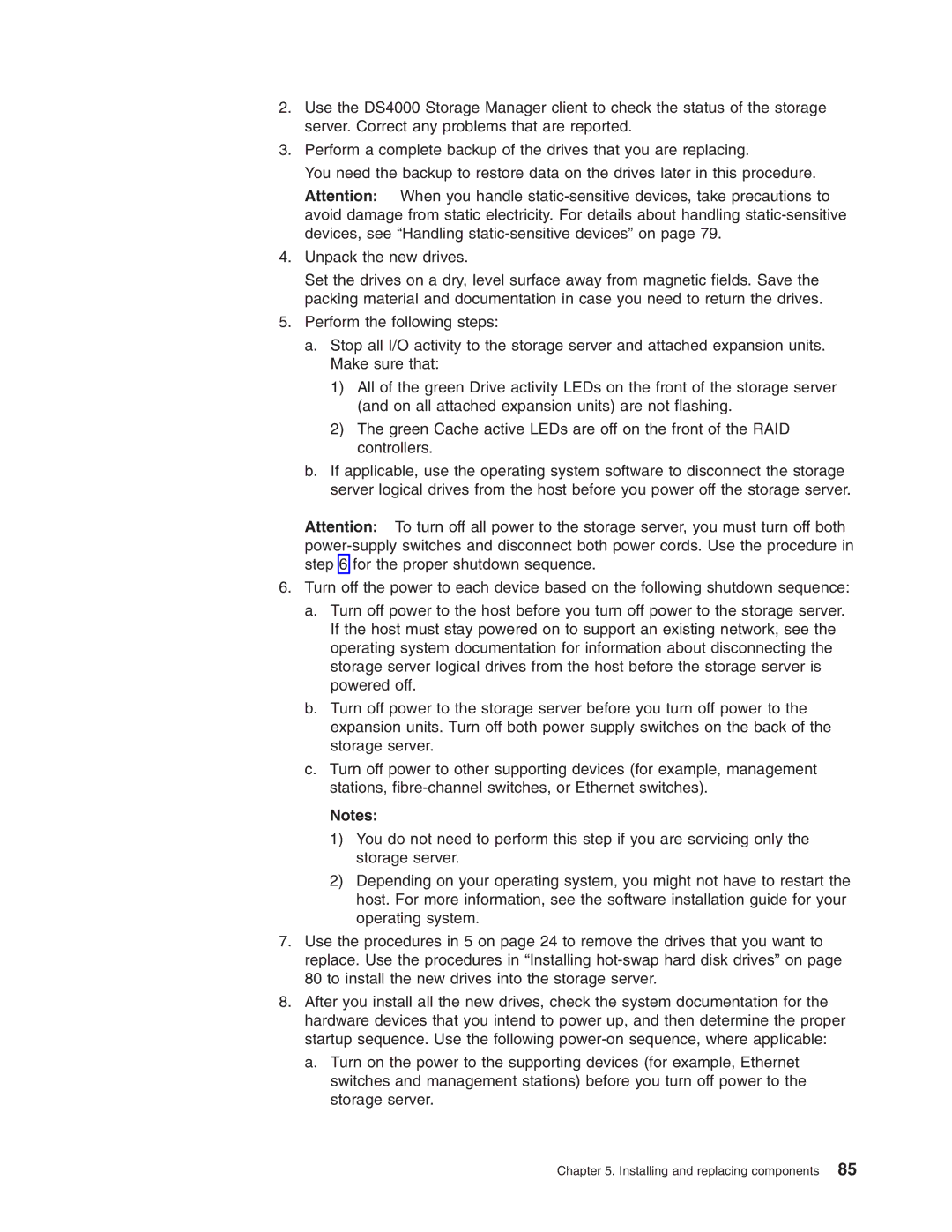2.Use the DS4000 Storage Manager client to check the status of the storage server. Correct any problems that are reported.
3.Perform a complete backup of the drives that you are replacing.
You need the backup to restore data on the drives later in this procedure.
Attention: When you handle
4.Unpack the new drives.
Set the drives on a dry, level surface away from magnetic fields. Save the packing material and documentation in case you need to return the drives.
5.Perform the following steps:
a.Stop all I/O activity to the storage server and attached expansion units. Make sure that:
1)All of the green Drive activity LEDs on the front of the storage server (and on all attached expansion units) are not flashing.
2)The green Cache active LEDs are off on the front of the RAID controllers.
b.If applicable, use the operating system software to disconnect the storage server logical drives from the host before you power off the storage server.
Attention: To turn off all power to the storage server, you must turn off both
6.Turn off the power to each device based on the following shutdown sequence:
a.Turn off power to the host before you turn off power to the storage server. If the host must stay powered on to support an existing network, see the operating system documentation for information about disconnecting the storage server logical drives from the host before the storage server is powered off.
b.Turn off power to the storage server before you turn off power to the expansion units. Turn off both power supply switches on the back of the storage server.
c.Turn off power to other supporting devices (for example, management stations,
Notes:
1)You do not need to perform this step if you are servicing only the storage server.
2)Depending on your operating system, you might not have to restart the host. For more information, see the software installation guide for your operating system.
7.Use the procedures in 5 on page 24 to remove the drives that you want to replace. Use the procedures in “Installing
8.After you install all the new drives, check the system documentation for the hardware devices that you intend to power up, and then determine the proper startup sequence. Use the following
a.Turn on the power to the supporting devices (for example, Ethernet switches and management stations) before you turn off power to the storage server.
